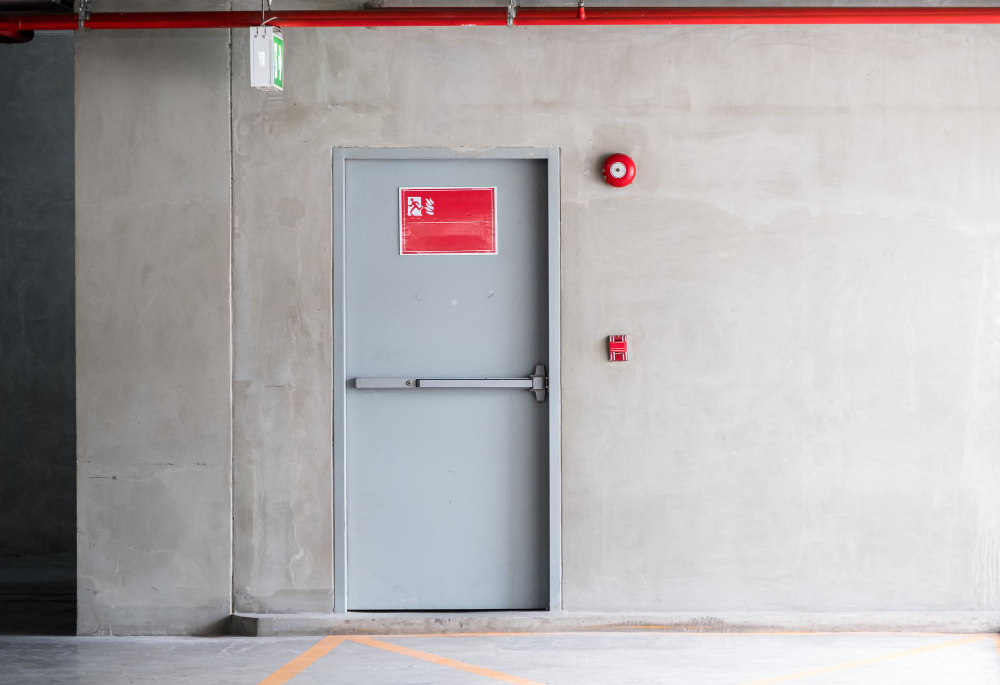
Fire doors must have door closers because they ensure automatic closure during emergencies, creating a critical barrier against flames and smoke.
Building codes require door closers on fire-rated doors to maintain compliance with safety regulations and insurance requirements.
Door closers are essential for fire doors to function properly and maintain their fire ratings.
Door closers transform standard fire-rated doors into active safety systems that respond automatically during emergencies. Understanding their function helps explain why they’re non-negotiable components of fire safety.
Fire doors are only effective when closed. Without a door closer, a fire door may remain open during an emergency.
Door closers provide the mechanical means to automatically return doors to their closed position after each use.
During evacuations, people rarely remember to close doors behind them – automatic closers eliminate this potential failure point.
This automatic function creates crucial barriers that:
Fire safety regulations explicitly require door closers on fire-rated doors in most jurisdictions.
Major building codes mandate self-closing devices for fire doors:
Non-compliance can result in failed inspections, penalties, and increased liability.
Fire doors are rated by their ability to withstand fire for specific timeframes:
These ratings are only valid when the door is properly closed against its frame.
Testing and certification of fire doors assumes they will be closed during a fire event.
Several types of door closers are available, each designed for specific applications. The right choice balances safety requirements with practical considerations like ease of use and accessibility.
Self-closing devices use mechanical springs and hydraulics to close doors automatically.
These are typically installed in residential settings and most commercial applications.
They feature adjustable closing speed and latching action to ensure proper sealing.
Automatic closing systems connect to the building’s fire alarm system and activate when smoke or heat is detected.
They’re ideal for doors that normally remain open but must close during emergencies.
Many use electromagnetic holders that release when the alarm activates.
Power-operated closers offer convenient daily use with fail-safe mechanisms for emergencies.
They ensure doors close properly even during power failures.
These closers are common in high-traffic areas or where accessibility needs must be addressed.
While fire containment is crucial, smoke control is equally important for life safety. Door closers play a vital role in creating effective smoke barriers that can mean the difference between life and death during a fire emergency.
Smoke inhalation is the leading cause of fire-related deaths, making smoke control a primary function of fire doors.
Door closers ensure fire doors create an effective seal to prevent smoke migration between building compartments.
Properly closing doors significantly improve survival chances by:
Without functioning door closers, smoke can quickly spread throughout a building, drastically reducing the time available for safe evacuation.
Installing door closers is just the first step – ongoing maintenance is essential to ensure these life-safety devices function properly during an emergency.
NFPA 80 requires annual inspections of fire door assemblies, including comprehensive testing of all closing mechanisms.
Key maintenance checks that should be regularly performed include:
Building owners should implement a documented maintenance program for all fire doors and their hardware, with records kept for compliance purposes.
Neglecting door closer maintenance can lead to catastrophic failures during fire events, potentially nullifying the entire fire safety system.
Fire doors must have proper door closers to fulfill their life-safety function of containing fires and smoke.
This combination creates a passive fire protection system that works even when active systems fail.
Regular inspection and maintenance ensure door closers will function when needed most.
At OUDE, we understand the crucial role door closers play in fire safety, which is why our products are designed to meet or exceed international safety standards including EN 1154, ANSI/BHMA A156.4, and UL 10C.




